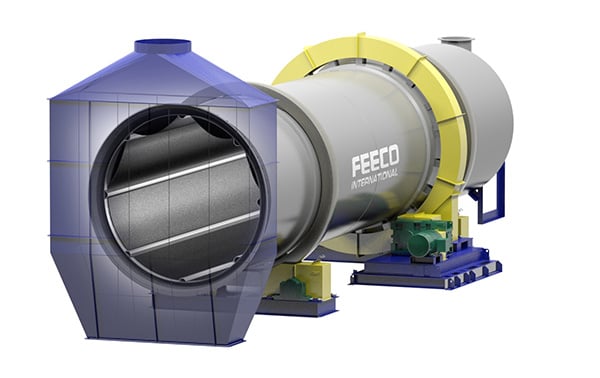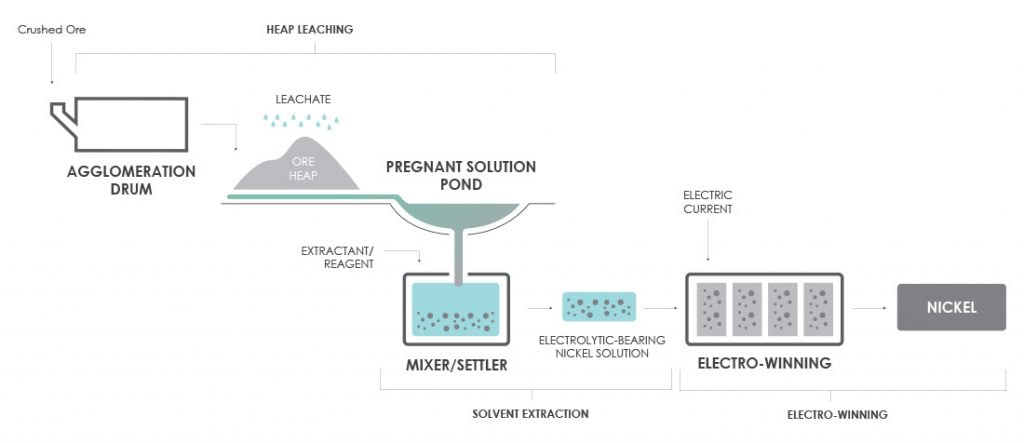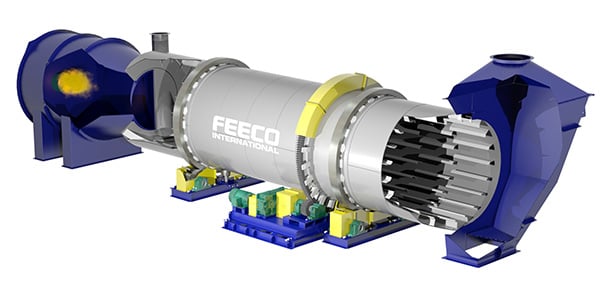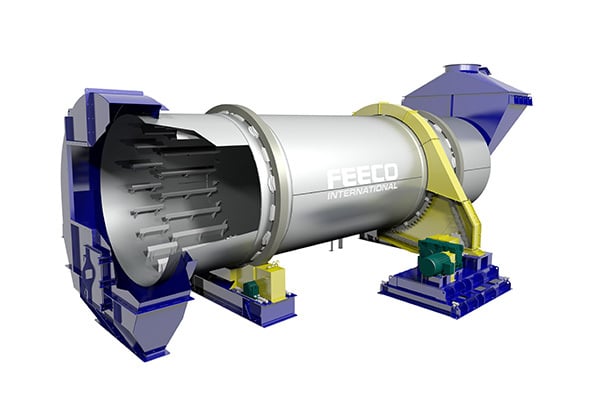While nickel is perhaps most commonly known for its use in coins, it is also an important material in many industrial processes. Nickel’s high melting point, ductility, and resistance to corrosion when alloyed lends itself to a wide range of industrial applications and materials, making it a key component in modern society. Nickel is most widely used in the production of stainless steel.
Traditionally, nickel has been processed from sulfide ores in an approach similar to copper processing, in which the ore is upgraded to concentrates and then smelted. As sulfide ore resources dwindle, however, processing of lateritic nickel ores is becoming of greater necessity, with many recognizing nickel laterite ores as the future of the nickel industry.
The Move to Nickel Laterites
Sulfides have long supplied the bulk of the global appetite for nickel. But dwindling resources combined with the need to mine at greater (and subsequently less economic) depths to obtain sulfide ores has many miners looking at nickel laterites. Additionally, nickel is expected to see growth in demand as developing economies spur a greater need for stainless steel. Similarly, demand is expected to grow as a result of nickel’s use in lithium-ion batteries; nickel is used in the cathodes of lithium-ion batteries and although this is not a new application (lithium-ion batteries have already seen widespread use in consumer electronics), the lithium-ion battery market is expected to see substantial growth as a result of the electric vehicle trend. On top of that, the amount of nickel used in such batteries has been increasing in an effort to improve performance. As such, the world is looking ahead at what can be done to maintain (and likely increase) a reliable and economic nickel supply.
Nickeliferous laterite ores are abundant, with experts estimating that they account for about 70% of known global nickel resources. They are also close to the surface, unlike sulfide deposits, which are mined at much greater depths. This abundance and ease of accessibility makes laterite ores an attractive option to the nickel industry.
The down side to laterite ores, and the reason why they haven’t been exploited on a widespread scale thus far, is that they require much more energy in processing over sulfide ore types.
Lateritic Nickel Ore Processing
While sulfide nickel ores are processed via upgrading to concentrates and then smelting, this approach is not applicable to laterite ores. A variety of approaches are available to process nickel laterite ores, with the most prevalent approaches explained below.
The method(s) chosen is dependent on the composition of the unique ore source. Most laterite ore deposits are made up of both limonite (iron rich) and saprolite layers, with the thickness of each layer varying significantly across different deposits.
Limonite, which accounts for nearly double the amount of saprolite available globally, is more amenable to processing via hydometallurgical techniques, while saprolites are more amenable to processing via pyrometallurgy.¹
Hydrometallurgical Approaches
The SX-EW Method
SX-EW, or the Solvent Extraction – Electrowinning approach to lateritic ore beneficiation, is a hydrometallurgical method that relies on leaching, extractants, and electrowinning to produce nickel from ore. This process is often referred to as Leach Solvent Extraction – Electrowinning for its employment of a leaching step. This process has been gaining attention for low-grade ores after success of the process has been widely demonstrated in the copper industry. It is now being implemented around the globe for the extraction of a variety of metals. A generalized overview of this process is given below.
Agglomeration and Leaching
Leaching typically occurs via either high pressure acid leach (HPAL) or heap leaching, with HPAL operations seeing mixed success as a result of both technical and economic difficulties. Here, we’ll focus on the heap leaching approach.
An agglomeration step often precedes the heap leaching step. In the agglomeration stage, ore fines are fed into an agglomerator (aka ore drum), where they are tumbled with the leachate solution to cause the ore fines to be more uniform in shape and size, allowing the leachate to more effectively percolate through the heap and jump-start the leaching process.

Image: Agglomerator for a nickel ore heap leaching operation in SX-EW.

Once agglomerated, ore is piled onto a heap, which is then irrigated with the leachate and allowed to sit for a pre-determined amount of time so the leachate can work its way to the bottom of the heap where it is collected in a pond.
Extraction and Electrowinning
An extractant or reagent is then combined with the impregnated solution to extract the target metal, which can then be electrowon.

The image shown here illustrates a generalized nickel SX-EW process with heap leaching and agglomeration (click image to view larger).
Recent advancements in extractants/reagents have allowed solvent extraction (SX) to significantly improve upon the separation of cobalt from nickel. Combined with the demonstrated success in the copper industry, this has allowed the SX-EW process to infiltrate the nickel/cobalt market.² The SX-EW method continues to grow in popularity for its ease of operation and cost effectiveness.
Pyrometallurgical Approaches
The RKEF Method
The RKEF, or Rotary Kiln Electric Furnace method, is a pyrometallurgical approach to producing ferronickel. As a pyrometallurgical technique, this method is best suited for ores that are predominantly saprolite. The RKEF method involves a variety of steps and is summarized below.
Drying
Nickel laterites contain a significant amount of water, making drying an important aspect of processing. A rotary dryer is typically used to remove free moisture from the ore, while bound moisture is removed later via a rotary kiln.

Image: Nickel Ore Dryer
Some novel processes may employ pelletizing at this stage of the process, where drying also facilitates pulverization of the ore in preparation of processing on a disc pelletizer. Pelletizing may also be used as a means of reintroducing recycle to the process. This was the case at the Barro Alto mine, where FEECO pelletizers were utilized to agglomerate recycle for reintroduction to the process.
Preliminary Reduction
Once ore has been dried, it is processed in a large-scale rotary kiln to remove chemically bound moisture, as well as the oxide component of the ore. This step is often referred to as pre-reduction.
Reduction & Smelting
Nickel is further reduced and smelted in an electric furnace. A cooling step may be implemented after the smelting step, typically through the employment of a rotary cooler.

Image: Rotary Cooler for Nickel
The RKEF method is criticized for its high energy consumption. As a result, it has been used in settings where the deposit is considered a high grade laterite and can justify the high operating costs.
The Caron Method
While the Caron process is often categorized as a hydrometallurgical approach, it is actually a combination of both hydrometallurgy and pyrometallurgy.
In the Caron process, the ore is first dried and then reduced, similar to the RKEF method. However, once the ore has been reduced, it is then leached via ammonia to extract the metal components (nickel is often accompanied by cobalt and iron). The extracted metals can then be purified/refined.
As a combination of the two approaches, this method is criticized for high operating costs, as a result of the energy intensiveness combined with the need for reagents. It also results in a fairly low recovery.
In each processing method explained here, a variety of material handling equipment is employed to carry material from one process stop to the next.
Conclusion
As a critical component in stainless steel and lithium-ion batteries, the waning nickel sulfide resources have many looking at nickeliferous laterite deposits as the future of the industry. Both hydrometallurgical and pyrometallurgical approaches are utilized to process nickel laterite ores, with the best approach depending on the ore composition. The Solvent Extraction – Electrowinning (SX-EW) process continues to grow in popularity.
FEECO has been assisting the mining industry through feasibility testing, process design, custom equipment, and parts and service support since 1951. We offer the best in rotary dryers and coolers for processing nickel, as well as engineered material handling equipment, and even rotary kilns for nickel recovery. For more information on our nickel capabilities, contact us today!
SOURCES:
- Dalvi, Ashok D., Dr., W. Gordon Bacon, Dr., and Robert C. Osborne. The Past and the Future of Nickel Laterites. Tech. Web. July 2017. <http://www.pdac.ca/docs/default-source/publications—papers-presentations—conventions/techprgm-dalvi-bacon.pdf?sfvrsn=e595cad3_4>.
- Lakshmanan, Vaikuntam Iyer, Raja Roy, and V. Ramachandran. Innovative Process Development in Metallurgical Industry. N.p.: Springer International Publishing AG Switzerland, 2016.
